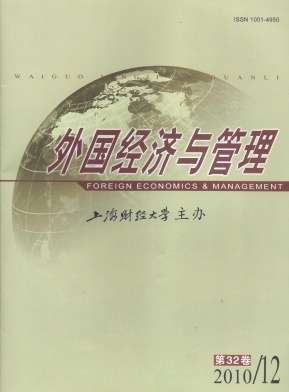扎根理论及其在管理学研究中的应用问题探讨
外国经济与管理 2010 年 第 32 卷第 12 期, 页码:10 - 18
摘要
参考文献
摘要
近年来,扎根理论所提倡的研究方法作为一种重要的质性研究方法,受到管理学者们的广泛关注,但在使用过程中仍存在一些需要进一步澄清的问题。本文主要从扎根理论要求严格实践"持续比较"和"理论取样"的基本思想,分别阐述了该理论的纵向理论建构与横向理论建构适用情景,指出了应该避免的使用误区,介绍了运用扎根理论方法进行管理学研究的主要操作步骤,并指出了运用扎根理论方法进行管理学研究应该注意的问题和未来发展方向。
[1]Suddaby,R.Fromthe editors:What grounded theory is not[J].Academy of Management Journal,2006,49(4):633-642.
[2]Glaser,B G,and Strauss,A L.The discovery of groundedtheory:Strategies for qualitative research[M].New York:Aldine.1967.
[3]Gersick,CJ G.Ti me andtransitionin workteams:Toward a new model in group development[J].Academy of Management Jour-nal,1988,31(1):9-41.
[4]Margolis,J D,and Molinsky,A.Navigating the bind of necessary evils:Psychological engagement and the production of interper-sonally sensitive behavior[J].Academy of Management Journal,2008,51(5):847-872
[5]Sutton,RI.The process of organizational death:Disbanding and reconnecting[J].Administrative Science Quarterly,1987,32(4):542-569.
[6]Miles,MB,and Huberman,A M.Qualitative data analysis[M].Beverly Hills,CA:Sage Publications,1984.
[7]Isabella,L A.Evolvinginterpretations as change unfolds:How managers construe key organizational events[J].Academy of Mana-gement Journal,1990,33(1):7-41.
[8]Browning,L D,Beyer,J M,and Shetler,J C.Building cooperation in a competitive industry:SEMATECHand the semiconductorindustry[J].Academy of Management Journal,1995,38(1):113-151.
[9]Ali mo-Metcalfe,B,and Alban-Metcalfe,R J.The development of a newtransformational leadership questionnaire[J].Journal ofOccupational and Organizational Psychology,2001,74(1):1-27.
[10]Uzzi,B.Social structure and competitionininterfirmnetworks:The paradox of embeddedness[J].Administrative Science Quar-terly,1997,42(1):35-67.
[11]Strauss,A,and Corbin,J.Basics of qualitative research:Techniques and procedures for developing grounded theory(2nd Ed.)[M].Thousand Oaks,CA:Sage Publications,1998.
[12]Martin,P Y,and Turner,B A.Grounded theory and organizational research[J].Journal of Applied Behavioral Science,1986,22(2):141-157.
[13]Krippendorff,K.Content analysis:An introduction to its methodology(2nd Ed.)[M].Thousand Oaks,CA:Sage Publications,2003.
[14]Glaser,B G.Basics of grounded theory analysis[M].Mill Valley,CA:Sociology Press,1992.
[15]Pandit,N R.The creation of theory:Arecent application of the groundedtheory method[EB/OL].http://www.nova.edu/ssss/QR/QR2-4/pandit.ht ml.
[16]Orlikowski,WJ,and Yates,J.Genre repertoire:The structuring of communicative practices in organizations[J].AdministrativeScience Quarterly,1994,39(4):541-574.
[17]Erickson,R J,and Ritter,C.Emotional labor,burnout,and inauthenticity:Does gender matter?[J].Social PsychologyQuarterly,2001,64(2):146-163.
[18]Greenberg,J.Looking fair vs.being fair:Managing i mpressions of organizational justice[A].in Staw,B M,and Cummings,L L(Eds.).Researchin organizational behavior[C].Greenwich,CT:JAI Press,1990:111-157.
[2]Glaser,B G,and Strauss,A L.The discovery of groundedtheory:Strategies for qualitative research[M].New York:Aldine.1967.
[3]Gersick,CJ G.Ti me andtransitionin workteams:Toward a new model in group development[J].Academy of Management Jour-nal,1988,31(1):9-41.
[4]Margolis,J D,and Molinsky,A.Navigating the bind of necessary evils:Psychological engagement and the production of interper-sonally sensitive behavior[J].Academy of Management Journal,2008,51(5):847-872
[5]Sutton,RI.The process of organizational death:Disbanding and reconnecting[J].Administrative Science Quarterly,1987,32(4):542-569.
[6]Miles,MB,and Huberman,A M.Qualitative data analysis[M].Beverly Hills,CA:Sage Publications,1984.
[7]Isabella,L A.Evolvinginterpretations as change unfolds:How managers construe key organizational events[J].Academy of Mana-gement Journal,1990,33(1):7-41.
[8]Browning,L D,Beyer,J M,and Shetler,J C.Building cooperation in a competitive industry:SEMATECHand the semiconductorindustry[J].Academy of Management Journal,1995,38(1):113-151.
[9]Ali mo-Metcalfe,B,and Alban-Metcalfe,R J.The development of a newtransformational leadership questionnaire[J].Journal ofOccupational and Organizational Psychology,2001,74(1):1-27.
[10]Uzzi,B.Social structure and competitionininterfirmnetworks:The paradox of embeddedness[J].Administrative Science Quar-terly,1997,42(1):35-67.
[11]Strauss,A,and Corbin,J.Basics of qualitative research:Techniques and procedures for developing grounded theory(2nd Ed.)[M].Thousand Oaks,CA:Sage Publications,1998.
[12]Martin,P Y,and Turner,B A.Grounded theory and organizational research[J].Journal of Applied Behavioral Science,1986,22(2):141-157.
[13]Krippendorff,K.Content analysis:An introduction to its methodology(2nd Ed.)[M].Thousand Oaks,CA:Sage Publications,2003.
[14]Glaser,B G.Basics of grounded theory analysis[M].Mill Valley,CA:Sociology Press,1992.
[15]Pandit,N R.The creation of theory:Arecent application of the groundedtheory method[EB/OL].http://www.nova.edu/ssss/QR/QR2-4/pandit.ht ml.
[16]Orlikowski,WJ,and Yates,J.Genre repertoire:The structuring of communicative practices in organizations[J].AdministrativeScience Quarterly,1994,39(4):541-574.
[17]Erickson,R J,and Ritter,C.Emotional labor,burnout,and inauthenticity:Does gender matter?[J].Social PsychologyQuarterly,2001,64(2):146-163.
[18]Greenberg,J.Looking fair vs.being fair:Managing i mpressions of organizational justice[A].in Staw,B M,and Cummings,L L(Eds.).Researchin organizational behavior[C].Greenwich,CT:JAI Press,1990:111-157.
引用本文
王璐, 高鹏. 扎根理论及其在管理学研究中的应用问题探讨[J]. 外国经济与管理, 2010, 32(12): 10–18.
导出参考文献,格式为:





 8004
8004  357
357

